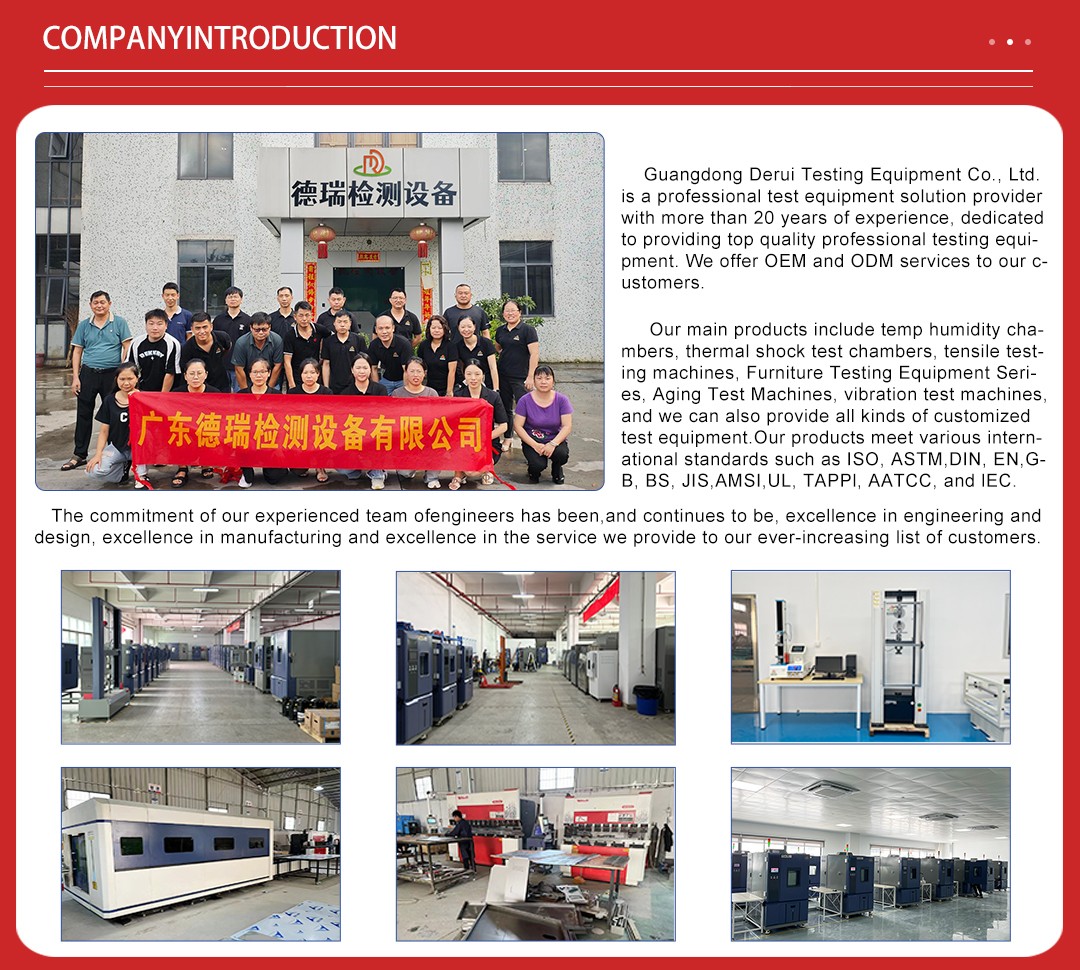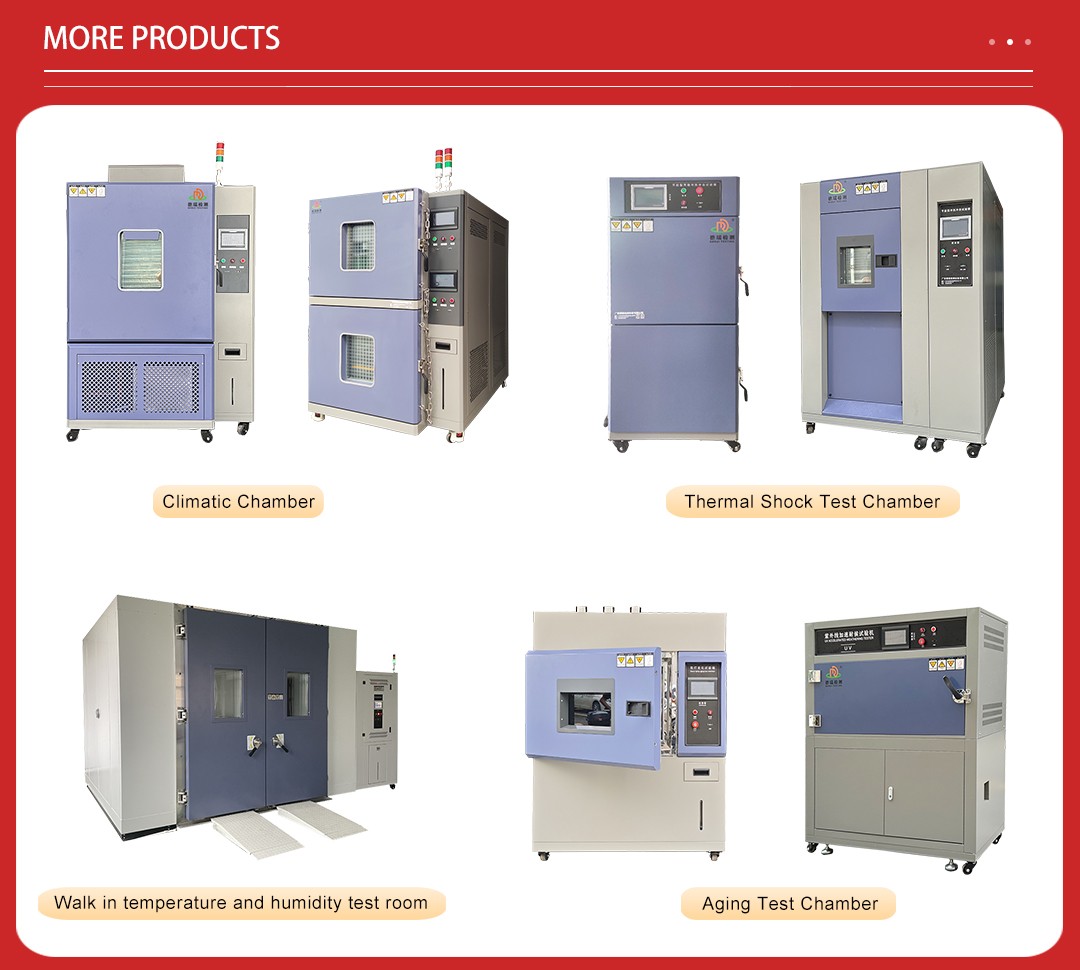
The thermal shock test chamber is a specialized piece of equipment designed to assess the durability and reliability of electronic products under rapid and extreme temperature fluctuations. This chamb ...

The thermal shock test chamber is a specialized piece of equipment designed to assess the durability and reliability of electronic products under rapid and extreme temperature fluctuations. This chamber is instrumental in simulating real-world environmental conditions to evaluate the performance and longevity of electronic components and devices.

Thermal shock testing is crucial for electronic products that are exposed to varying environmental conditions. It is widely used in various industries, including:
1. Consumer Electronics: Ensures the durability of smartphones, laptops, tablets, and wearable devices.
2. Automotive: Validates the reliability of electronic components in vehicles, such as sensors, control units, and infotainment systems.
3. Aerospace: Tests the performance of electronic systems in aircraft, including avionics and communication equipment.
4. Military: Evaluates the robustness of electronic equipment in harsh and demanding environments.
5. Telecommunications: Assesses the durability of networking equipment, routers, and switches.
6. Medical Devices: Ensures the reliability of electronic medical equipment, such as diagnostic tools and monitoring devices.

Several international standards govern the thermal shock testing of electronic products, including:
4. ASTM D4585: Standard Practice for Conducting Thermal Shock Tests of Electronic Components. This standard provides guidelines for conducting thermal shock tests to evaluate the performance of electronic components.

Structural Features
The thermal shock test chamber is engineered with several key structural components:
1. Dual Chambers: Separate hot and cold chambers to create extreme temperature differences. The hot chamber can reach temperatures up to +200°C, while the cold chamber can go as low as -70°C.
2. Rapid Transfer Mechanism: A pneumatic or mechanical system, such as an elevator or shuttle, to quickly transfer samples between the hot and cold chambers. This mechanism ensures minimal temperature transition time.
3. Insulated Walls: High-quality insulation to maintain stable temperature conditions within each chamber and prevent heat transfer between the chambers.
4. Sample Holders: Adjustable racks, trays, or custom fixtures to securely hold electronic samples during testing. These holders ensure that samples are evenly exposed to temperature changes.
5. Viewing Windows: Observation windows to monitor the testing process without interrupting the cycle.
Performance Characteristics
The performance of the thermal shock test chamber is characterized by several key features:
1. Wide Temperature Range: Capable of achieving temperatures from -70°C to +200°C, with custom ranges available for specific testing requirements.
2. Rapid Temperature Transition: Quickly shifts between hot and cold extremes, with transition rates up to 50°C per minute, to simulate real-world conditions.
3. Uniform Temperature Distribution: Ensures even temperature exposure across all samples, with minimal temperature gradients within the chambers.
4. Precise Control: Advanced control systems, such as PID controllers, to maintain accurate temperature and humidity levels. These systems provide real-time monitoring and adjustment of test parameters.
5. Repeatability: Consistent and repeatable test results, ensuring the reliability of performance data.
Design Features
The design of the thermal shock test chamber incorporates several advanced features:
1. User-Friendly Interface: Easy-to-use controls, such as touchscreen interfaces, for setting test parameters, monitoring progress, and accessing pre-programmed cycles.
2. Data Logging: Integrated data logging systems to record temperature profiles, humidity levels, and test results. These systems provide comprehensive data analysis and reporting capabilities.
3. Safety Features: Emergency stop buttons, safety interlocks, and alarms to prevent accidents and protect operators. Additional safety features include automatic chamber equalization to prevent thermal shock to operators during sample loading and unloading.
4. Customization Options: Adjustable settings to meet specific testing requirements, such as custom temperature ranges, humidity control, and cycle durations.
5. Compatibility: Designed to be compatible with various sample sizes and types, as well as integration with other testing equipment.

| Model | DR-H203L2-50 | DR-H203L2-80 | DR-H203L2-100 | DR-H203L2-150 |
| Internal dimension | 350*350*400mm | 400*400*500mm | 500*400*500mm | 500*500*600mm |
| External dimension | 1350*1700*1650mm | 1400*1850*1960mm | 1500*1750*1880mm | 1500*1850*1980mm |
| Temperature range | -70℃~200℃ | |||
| Test Method | Pneumatic Operated Door Switch(two/three-zone) | |||
| High Temp Chamber Preheating Range | RT~200℃ | |||
| Heating Speed | ≤35min | |||
| Low Temp Chamber Precooling Range | -70℃~RT | |||
| Cooling Speed | ≤50min | |||
| Temp Tolerance | ±2℃ | |||
| Thermal Recovery Time | Two zone model:7-35 second,recovery time is 5 minutes | |||
| Internal Material | Stainless Steel 304 | |||
| External Material | Stainless Steel/Spray Paint | |||
| Cooling Method | Mechanical Compression Binary Cascade Refrigeration | |||
| Refrigeration Compressor | Semi-closed Piston | |||
| Refrigerator | Hermertically Sealed France Tecumseh Compressor or Semi-hermetic BOCK Compressor | |||
| Operation Panel | Programmable LCD Touch Screen | |||

Working Principle
The thermal shock test chamber operates by subjecting electronic samples to rapid and repetitive temperature changes. The testing process involves several key steps:
1. Initial Conditioning: Samples are first conditioned at a specific temperature and humidity level to establish a baseline for testing.
2. Cyclic Testing: Samples are transferred between the hot and cold chambers at predetermined intervals. The transfer mechanism ensures minimal transition time, typically less than 10 seconds.
3. Dwell Time: Samples are held in each chamber for a specified dwell time, typically ranging from a few minutes to several hours, to allow for temperature stabilization.
4. Data Collection: Temperature profiles, humidity levels, and performance data are recorded throughout the testing process using integrated data logging systems.
5. Failure Detection: Samples are continuously monitored for failures, such as electrical shorts, open circuits, or physical damage.
Significance of Thermal Shock Testing for Electronic Products
Data Analysis and Interpretation
Data collected from the thermal shock test chamber can be analyzed to evaluate the performance of electronic products. Key metrics include:
1. Temperature Profiles: Analysis of temperature profiles to assess the thermal response of electronic components.
2. Failure Rates: Evaluation of failure rates and modes to identify potential design weaknesses.
3. Performance Data: Analysis of electrical performance data, such as resistance, capacitance, and inductance, to assess the impact of temperature changes on electronic components.
4. Statistical Analysis: Use of statistical analysis techniques, such as Weibull analysis, to predict the reliability and lifespan of electronic products.


Not search wanted products